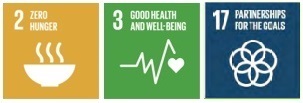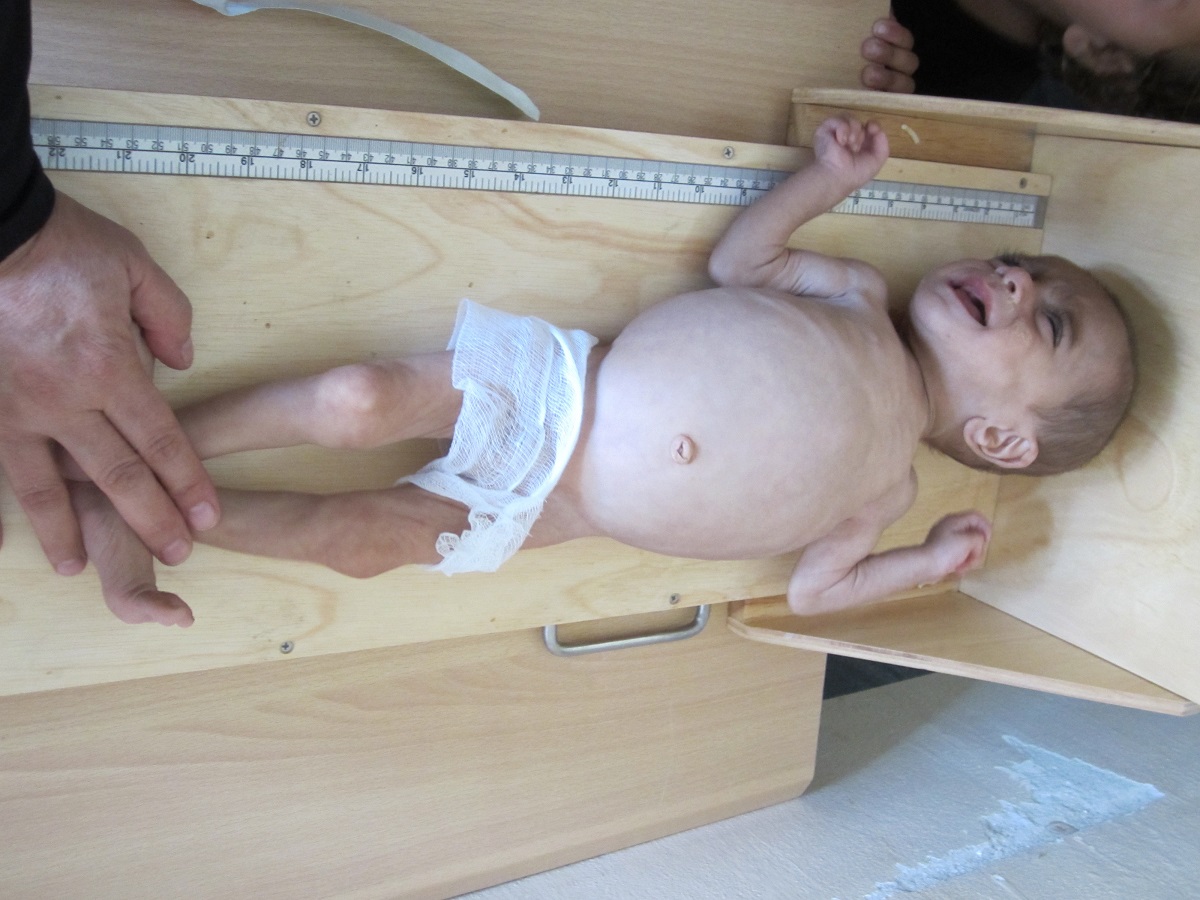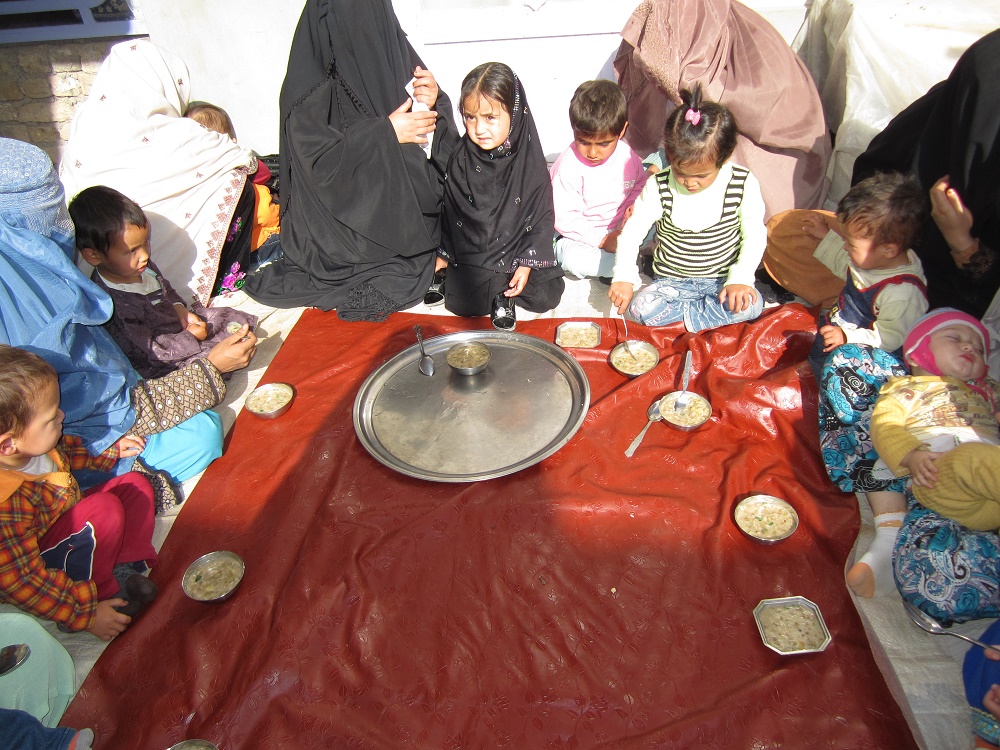Nutrition
Nutrition programs contributes to the following SDGs

Nutrition Situation in Afghanistan
Good nutritional status is fundamentally important for ensuring and maintaining health and enhancing physical and cognitive capacity of populations. Thus, the economic growth and social development of a nation is highly dependent on a well-nourished population. Furthermore, it is recognized that without reducing childhood malnutrition, developing countries such as Afghanistan will not be able to achieve the 2nd Sustainable Development Goals (SDGs), i.e. to eradicate extreme poverty and hunger.
Integrated food security phase classification (IPC); Sept 2022 – Apr 2023 reports: An estimated 4 million vulnerable people will likely suffer from acute malnutrition in 2023 and are in need of urgent malnutrition intervention, including respectively 875,227 and 2,347,802 children with Severe Acute Malnutrition (SAM) and Moderate Acute Malnutrition (MAM), respectively, and 804,365 pregnant and lactating women (PLW) with acute malnutrition.
The major contributing factors to acute malnutrition include acute food insecurity (AFI), with about 45% to 55% of households in IPC AFI Phase 3 or above, which contributes to poor quality of foods consumed by children (only 16% have a minimum acceptable diet), as well as a high prevalence of communicable diseases (including diarrhea, malaria and Acute Respiratory Infections); compounded by poor hygiene practices and sanitation, underpinned by basic factors, such as socio-economic status, social and cultural norms, and natural disasters, including the foods, droughts and earthquakes recently experienced by the country, as reported by the Whole of Afghanistan Assessment (WoAA).
The prevalence of global acute malnutrition (GAM) ranges from 4.4% to 15.7%, with the above listed 26 provinces having a prevalence of above 10%. The prevalence of combined Severe Acute Malnutrition (SAM) on weight for height (WHZ) and MUAC measurements among children under five years of age reaches 2% in 29 provinces. Acute malnutrition highly affects pregnant and lactating women (PLW) with the prevalence ranging from 3.8% to 50%, which reflects an alarming nutrition situation, i.e., above 20% in 19 provinces.

The 2013 National Nutrition Survey indicates:
|
Condition/Deficiency |
Women of Reproductive Age (15-49 Years) | Children (6-59 months) | Adolescent girls (10-19 years) |
| Stunting (chronic malnutrition) | 40.9% | ||
| Wasting (acute malnutrition) | 9.5% | ||
| Anemia | 40.4% | 44.9% | 30.9% |
| Iron deficiency | 24.0% | 26.1% | – |
| Iodine deficiency | 40% | 29.5% | – |
| Zinc deficiency | 23.4% | 15.1% | – |
| Vitamin A deficiency | 11.3% | 50.4% | – |
| Vitamin D deficiency | 94,8% | 81.0% | – |
| Folate deficiency | – | – | 7.4% |
AHDS interventions for Nutrition
AHDS has worked on the first and second of the three proposed levels of interventions to combat the problem of malnutrition:
- Nutrition specific interventions: Includes interventions such as adolescent and pre-conception nutrition, maternal nutrition, micronutrients supplementation and food fortification, breastfeeding and complementary feeding, dietary supplementation for children, dietary diversification, feeding behaviors and stimulation, treatment of acute malnutrition, disease prevention and management and nutrition interventions during emergencies.
- Nutrition sensitive interventions: Includes agriculture and food security, social safety net, early child development, maternal mental health, women’s empowerment, child protection, classroom education, water and sanitation, health and family planning services.
- Building enabling environment: Rigorous evaluation, advocacy strategies, horizontal and vertical coordination, accountability, incentives, legislations, and regulations; leadership programs; investment in capacity development and mobilization of domestic resources.
AHDS implements integrated management of acute malnutrition (IMAM) as main appraoch. AHDS’ public nutrition program includes assessment, prevention and treatment of malnutrition, surveillance and reporting. Growth monitoring for under two, Infant and Young children feeding (IYCF) counseling, screening and treatment of acute severe malnutrition will take place in the health facilities. Nutrition counselors are assigned in the health facilities; considering the training process by MoPH-public nutrition department (PND).

The health facilities provide outpatient treatment of malnourished children and pregnant and lactating women (PLW), referral, and admission in stabilization centers. Supplementation of micro-nutrients (zinc, iodized salt, vitamin-A, iron and folic acid) are provided in the health facilities as well as in the village by the CHWs. The nutrition program managed at community level through application of Nutrition Education Rehabilitation Sessions (NERS) focusing on coverage and access, sensitization and community awareness, screening and community-based growth monitoring and counselling.
Infant and Young children feeding (IYCF) and treatment of acute severe malnutrition for children takes place in the health facilities. Screening for malnutrition, IYCF and treatment of SAM and its complications take place in stabilization centers. Baby Friendly Hospital Initiative (BFHI) is also considered. Community mobilization is done by the health posts. Health education sessions are conducted for the mothers. Severe acute malnutrition (SAM) and moderate acute malnutrition (MAM) cases are referred to out-patient treatment points (OTP) and supplementary feeding program (SFP) after screening at the community level in line with the NERS approach.
